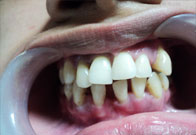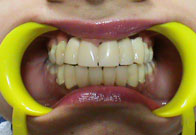Everyone desires to have a healthy teeth and gum but something which is overlooked by most dentists is the Periodontium that comprises of the bones and gums surrounding the tooth. When a periodontist diagnoses the tissues around the teeth and finds it not healthy and cannot be further repaired with non-surgical procedures then they suggest for a periodontal surgery before the condition is adverse.
Periodontal Dental Surgery

Periodontal is a plastic dental surgery which is used to regenerate and restore normal form and function to the lost and damaged periodontal structures that support the teeth. Periodontal surgery is not a cure but rather an adjunct to make long-term treatment favorable. The main aim of periodontal surgery is to increase the life expectancy of the teeth. There is a possibility for the reoccurrence of periodontal disease in susceptible individuals.

Over a period of time, the treatment of periodontal disease is carried out to control the cause of microbial dental plague, to treat the deformities and tissue loss which is due to the disease. This is achieved by getting rid of the 'pockets' of the morbid tissue, reconstructing and regenerating gum and periodontal tissue attachment to the teeth. It provides an environment which is tributary to the daily oral hygiene and professional dental care.
Periodontology or Periodontics is a dentist's specialty which studies the supporting structure of the teeth as well as the disease and conditions affecting them. The supporting tissues known as periodontium comprises of the periodontal ligament, the alveolar bone, the cementum and the periodontal ligament. Periodontist is the professional who practices in this specialty field of dentistry.
Periodontal Surgery Process
Peridontal surgery is not a major surgery and can be conducted under local anesthesia by a certified Periodontal Surgeon. The surgical procedure comprises of folding the gums or tissues back so that the surgeon can view the area properly, and then the surgeon removes the deep bacterial deposits embedded on the root of the tooth. After removal of the bacterial, the gums are reattached so that the body again accepts the root surface. After the preparation of the root, the gum is again closed back with dressing and stitches to keep the operated area intact for one week. This surgical procedure enables the surgeon to graft the bones in order to repair the damages.
If you have been diagnosed with periodontal disease then it is important to go for surgery. The Periodontist determines the tissue around your teeth and suggests two kinds of surgical treatments which are Pocket Reduction Procedures and Regenerative Procedures. In advanced cases the first line of treatment, root planning and scaling is combined with excellent home care to keep away the bacteria from forming. However, this is not enough to bring the disease under control. Therefore surgery is needed.
Peri- Implantitis
Periodontology is also about the maintenance of dental implants which includes the treatment of peri-implantitis. It is the inflammatory bone loss around the dental implants. The cause of peri-implantitis is similar to periodontal disease.

BEFORE

AFTER
